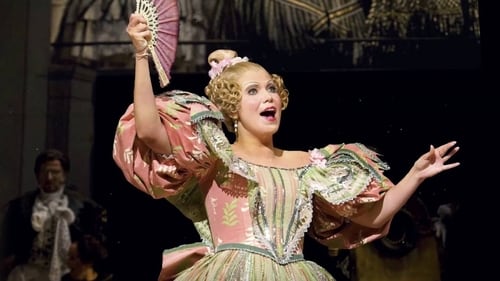
Nathanael
The great storyteller Hoffmann is losing himself to drink. His rival in love, Councillor Lindorf, claims that Hoffmann knows nothing of the heart, and so goads Hoffmann into telling the tales of his three great loves – each destroyed by a villain who bears an uncanny resemblance to Lindorf… First Hoffmann tells of his infatuation for the mechanical doll, Olympia – who is destroyed by the inventor Coppélius. Next comes the courtesan Giulietta, who throws over his adoration in favour of jewels from the magician Dappertutto. Finally, the gentle Antonia is forced to sing to her death by the wicked Doctor Miracle. His stories finished, Hoffmann rouses from his drunken stupor to find Lindorf has made off with Stella, Hoffmann’s latest love – but the Muse compels him to transform his heartache into art.

Flavio
The priestess Norma loves Pollione, leader of the occupying force suppressing her people, and has borne two children by him. But Pollione’s love has withered, and he now loves Norma’s fellow priestess Adalgisa. Meanwhile, the people urgently look to Norma to lead their rebellion. Norma discovers the love between Pollione and Adalgisa. Furiously she gives the signal for war. Pollione is captured, attempting to steal away with Adalgisa. Norma, called upon to announce a sacrificial victim to consecrate the uprising, declares it shall be a guilty priestess: herself.

Flavio
갈리아 지방의 수장 오로베소는 지방을 점령한 로마군에게 항거해 전쟁을 일으키고자 한다. 그러나 그녀의 딸 노르마는 비밀리에 로마군 사령관 폴리오네와 사랑에 빠져 두 아이까지 둔 상태로 아직 신의 계시가 내리지 않았다며 전쟁을 연기시킨다. 이 사실을 모르는 폴리오네는 젊은 여사제 아달지사와 사랑에 빠져 함께 로마로 돌아갈 계획을 세운다. 결국 노르마가 둘의 관계를 알게 되고 폴리오네는 오로베소에게 붙잡힌다.

Un lampionaio
"Manon Lescaut is a heroine I believe in," wrote Giacomo Puccini to his publisher Giulio Ricordi. Experience Puccini's third opera and first big success in Götz Friedrich's landmark 1983 production at the Royal Opera House. The extraordinary Plácido Domingo and Kiri Te Kanawa take on the roles of the Chevalier Des Grieux and Manon Lescaut, accompanied by the Royal Opera House Choir and Orchestra under the direction of Giuseppe Sinopoli.



